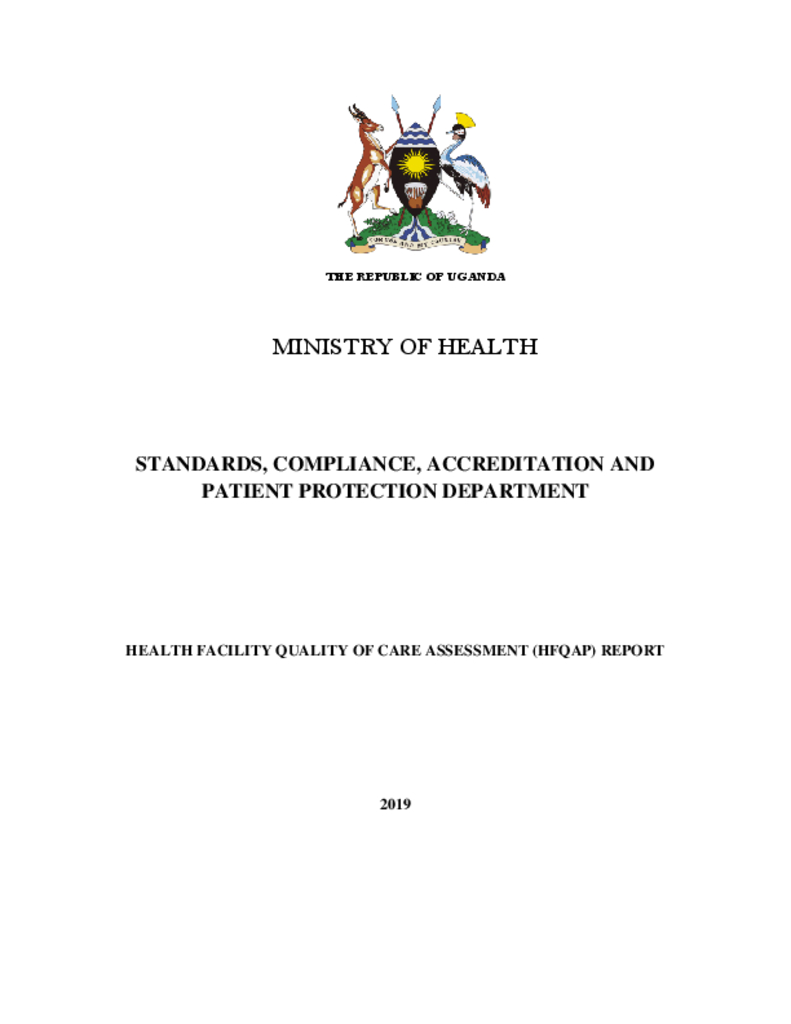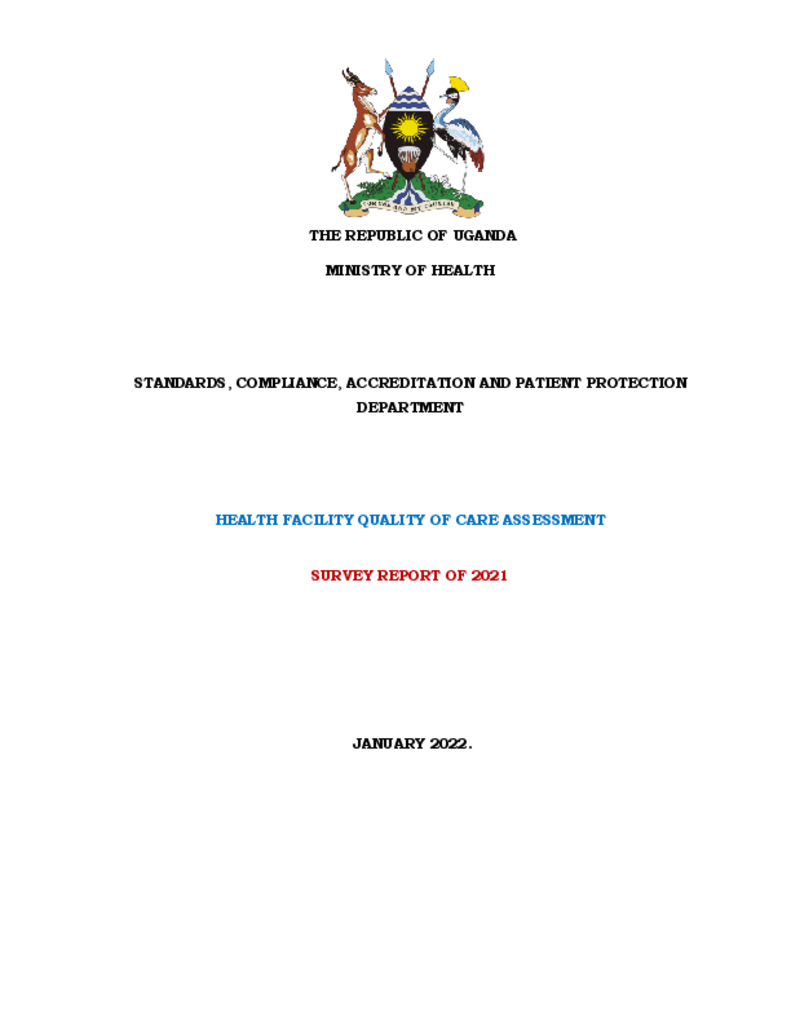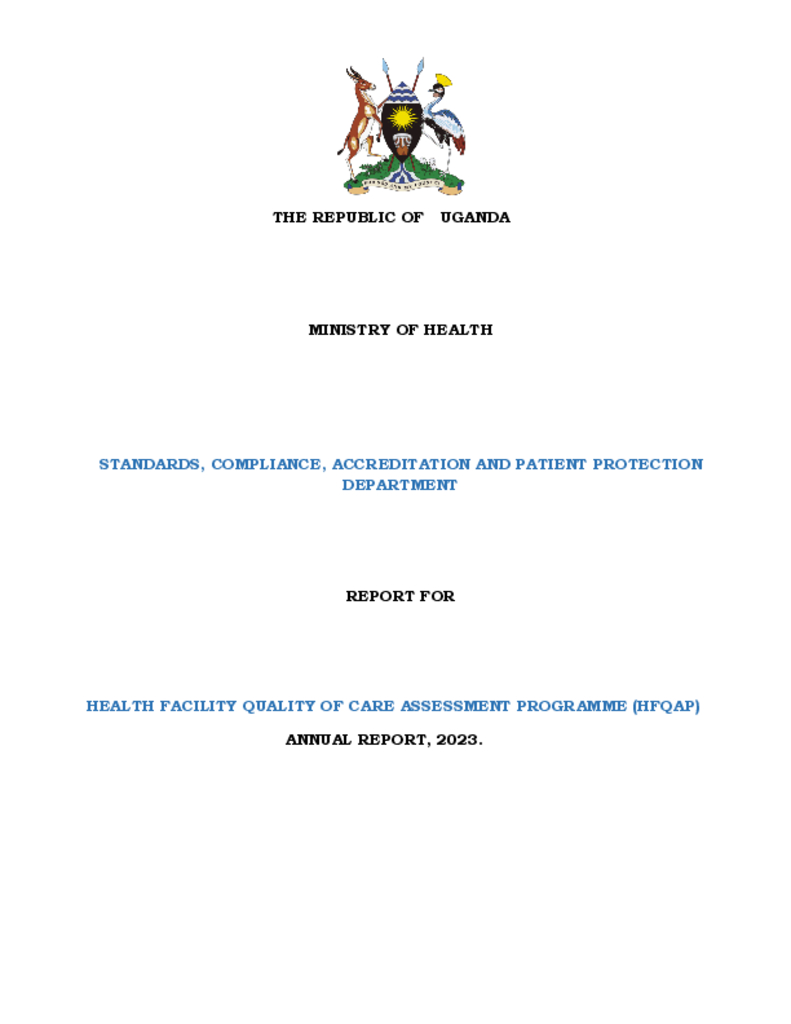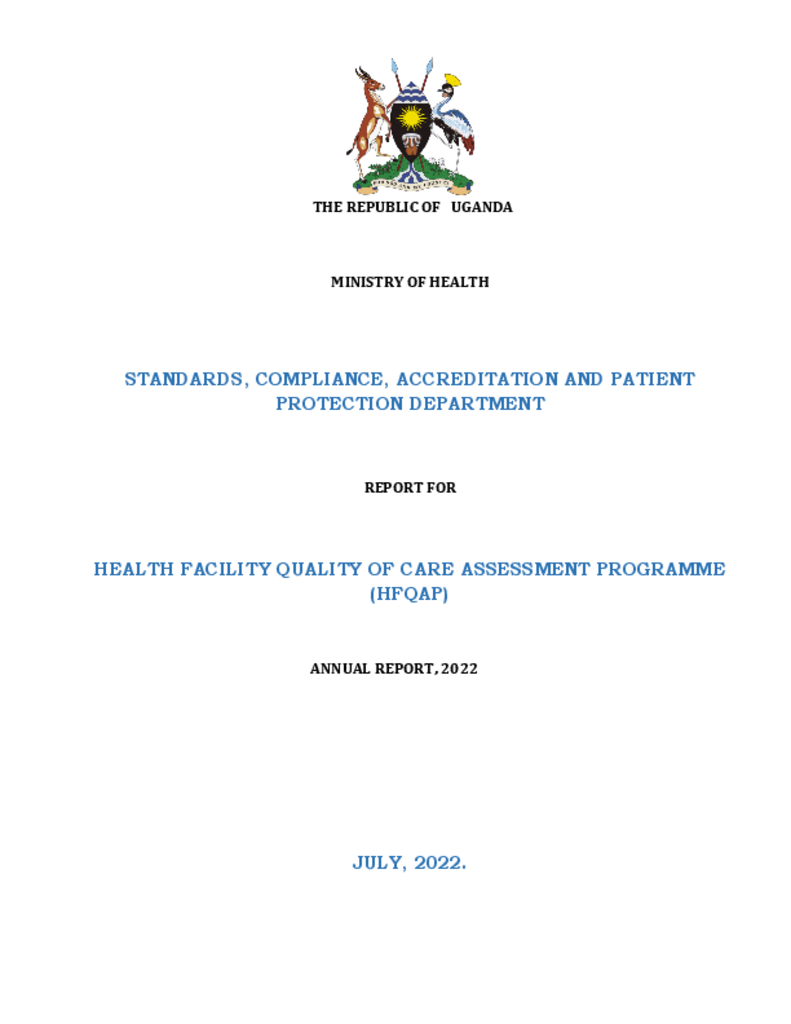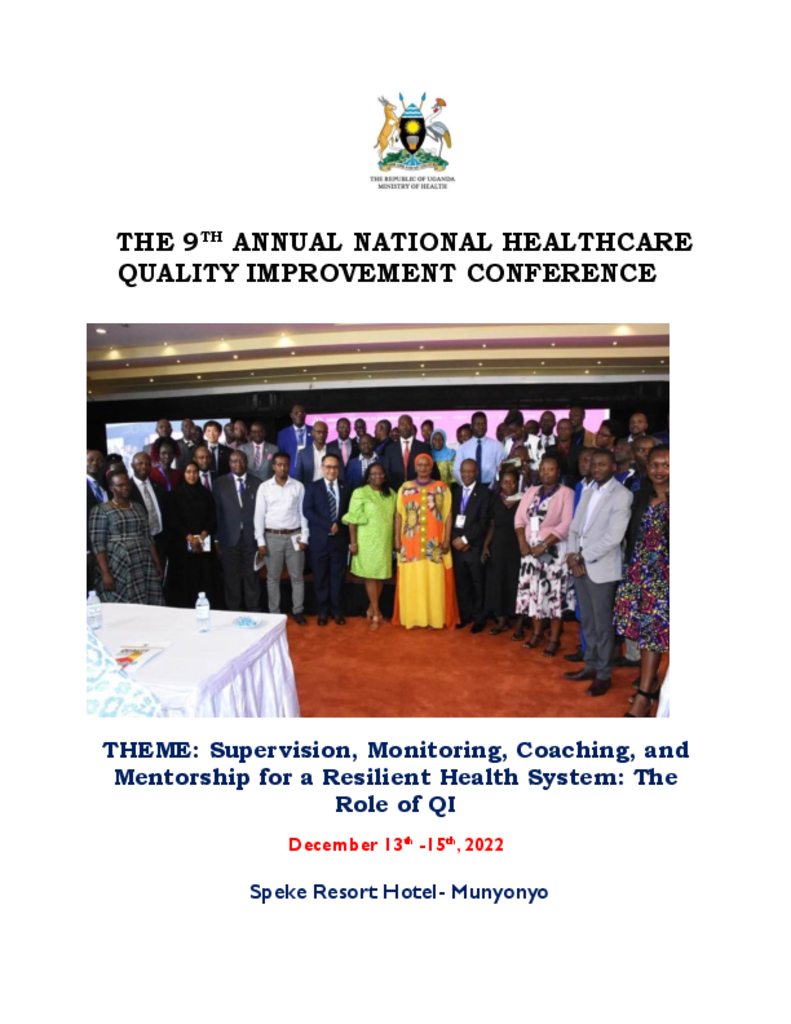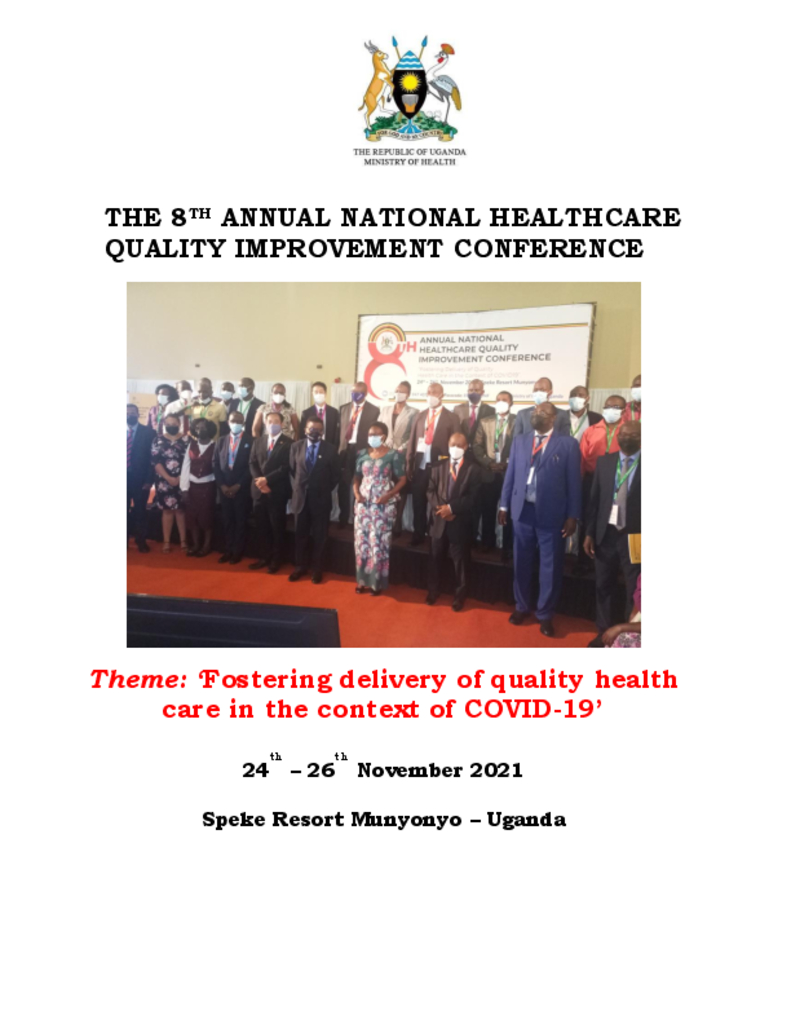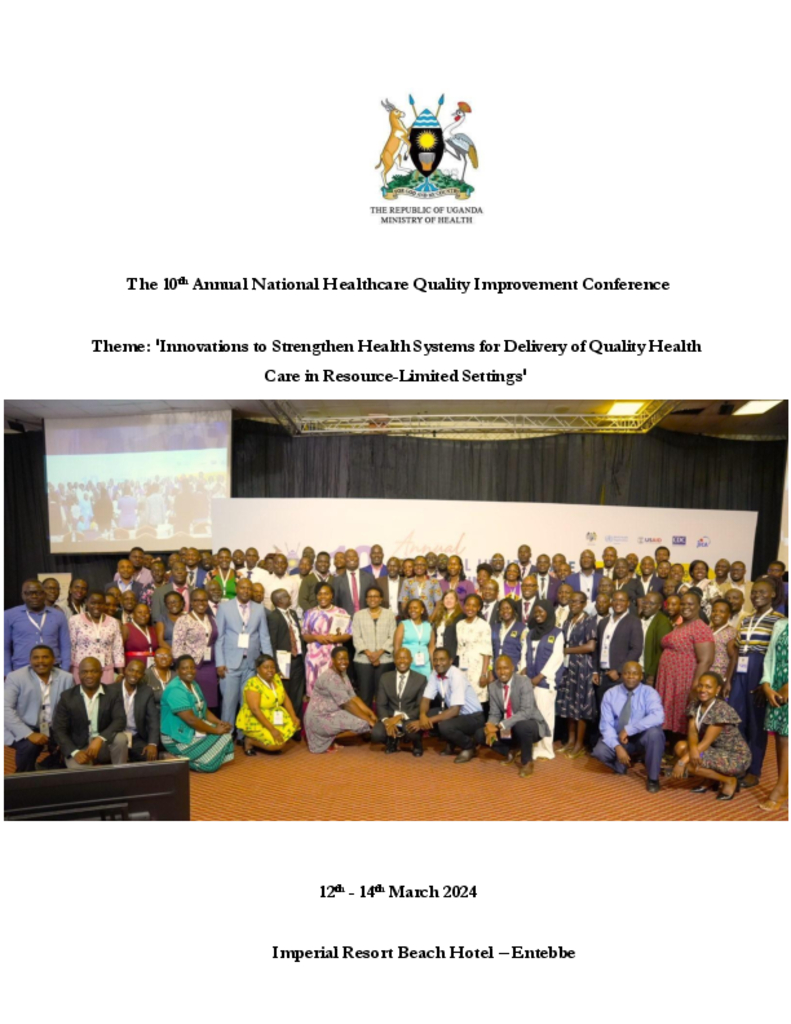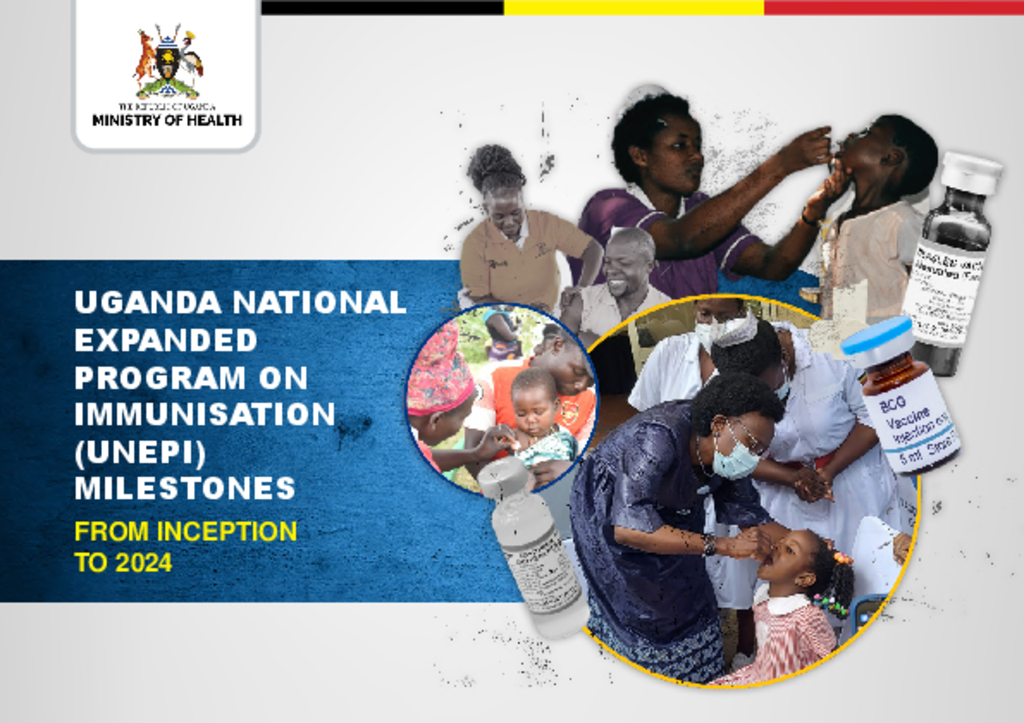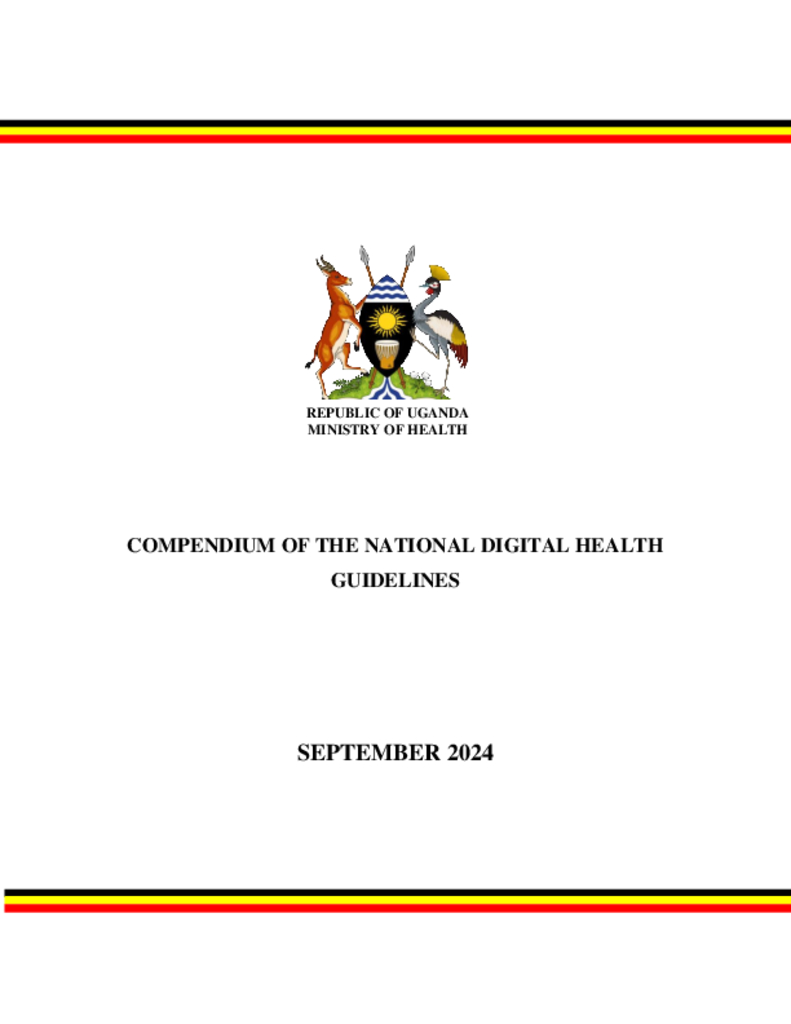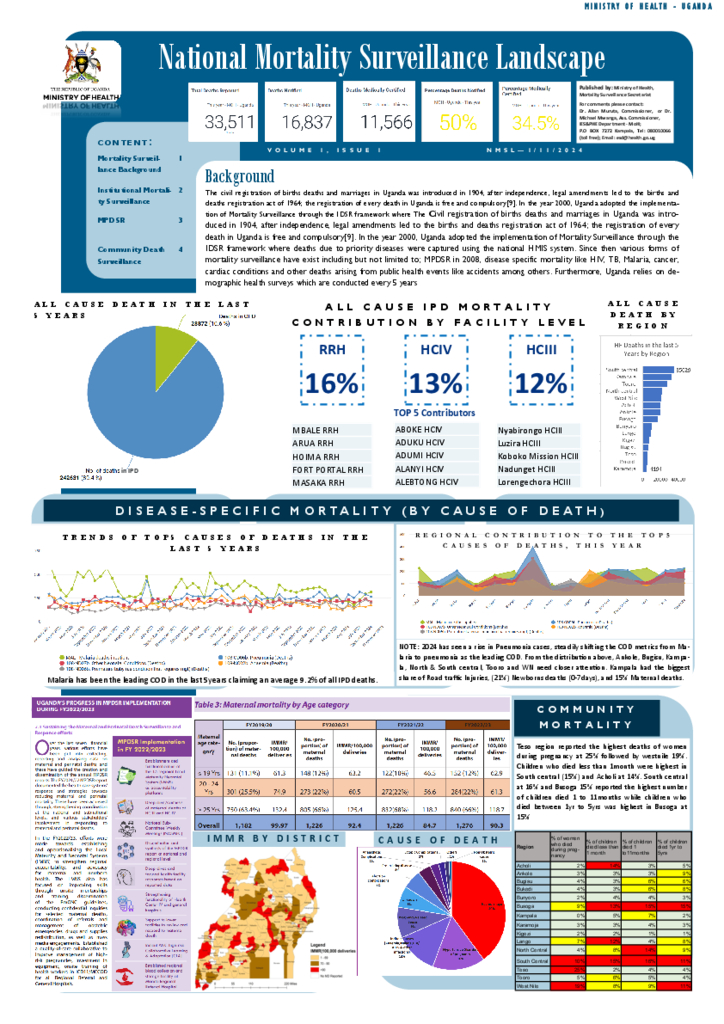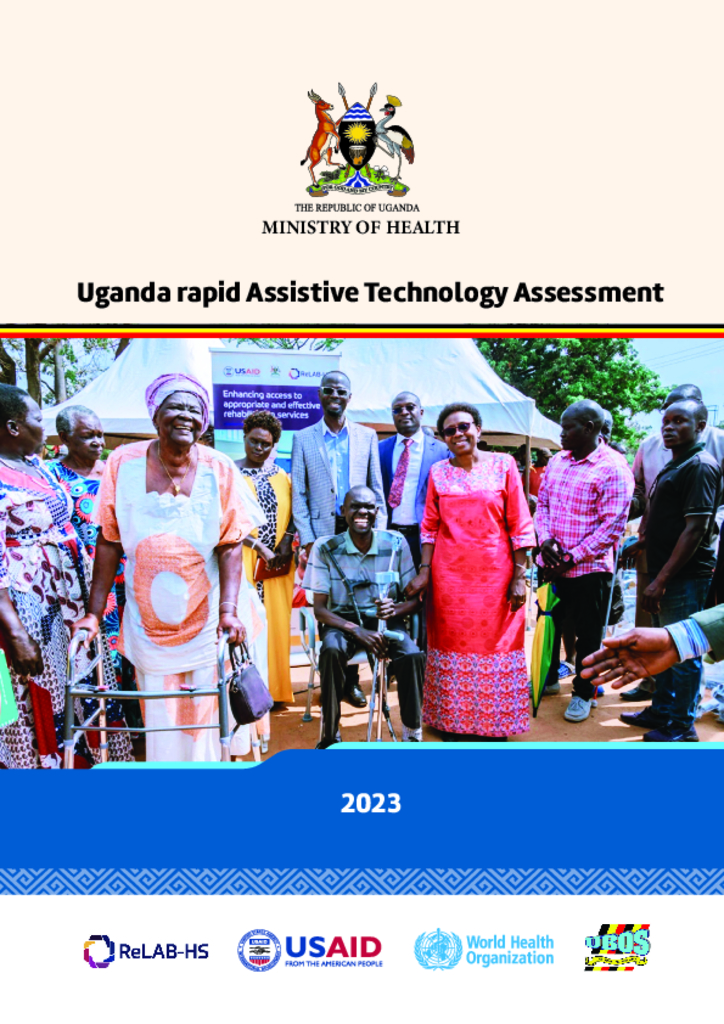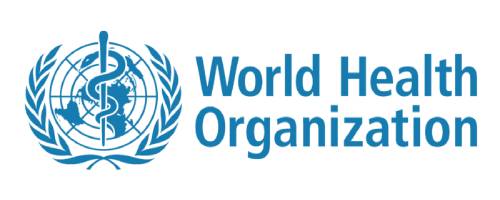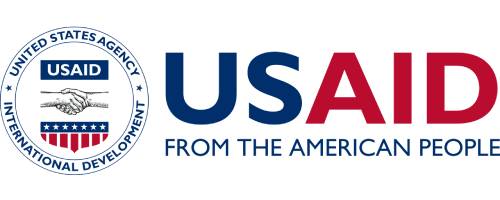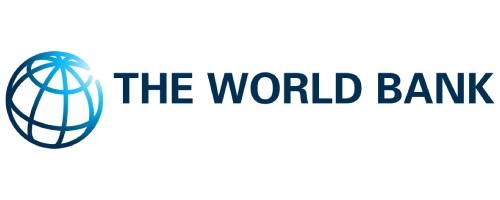The Health facility Quality of Care Program (HFQAP) was developed basing on a systematic review of the YSP as the previously adapted national quality assessment strategy and the current health facility assessment methodologies; including the SARA and the HFA introduced by the STAR E LQAS Project. The main objective is to provide information on the quality of care and the general functionality of both the public and private health facilities in Uganda and use it for CQI.
The quality of health care has been a major deterrent to health service utilization in Uganda as evidenced by the slow progress in improvement of some of the health sector core performance indicators. Studies have also shown that the technical quality of health services has been deficient in some key areas. The HFQAP was developed to be implemented as one of the Quality Improvement (QI) interventions in the health sector. HFQAP survey facilitates identification of gaps and weaknesses responsible for sub-optimal service provision and intervention coverage that need to be addressed and provide a basis for planning and monitoring scale-up of interventions for service delivery improvement.
The Health Facility Quality of Care Assessment Program (HFQAP) was launched by Ministry of Health in 2015, whose main goal was to provide regular information on quality of care and the general functionality of both the public and private (PNFP) health facilities in Uganda. The information generated from periodic assessments is to be used for performance monitoring and Continuous Quality Improvement (CQI).
The Health Facility Quality of Care Assessment Program (HFQAP) was launched by Ministry of Health in 2015, whose main goal was to provide regular information on quality of care and the general functionality of both the public and private (PNFP) health facilities in Uganda. Only health facilities that report through District Health Information System (DHIS2) were considered. The information generated from periodic assessments is to be used for performance monitoring and Continuous Quality Improvement (CQI).
The 9th National Quality Improvement Conference is one special forum where researchers, practitioners, health service managers, policy makers, and academia come together to take stock of what has worked and what has not worked. experts. The conference of December 2022 brought together delegates from all levels of the health sector including, development & implementing partners, health care service providers and health consumer organizations under the theme “Supervision, Monitoring, Coaching, Mentorship for a resilient health system: The Role of QI”.
The 8th QI conference was the 2nd of its kind given that it was mainly virtual with over 2,000 participants expected to be hosted. This National QI Conference was therefore timely and planned to provide a forum for peer learning through showcasing QI work from across the country, coupled with
expert presentations on QI work from national and international experts.
The health sector developed the National Quality Improvement Framework & Strategic Plan (NQIF&SP) 2020/21 – 2024/25 that was launched in November 2021 at the 8th National QI Conference. The national quality improvement conference is a forum where frontline healthcare providers, researchers, practitioners, health services managers, policymakers and academia come together to share experiences of best practices, challenges, and innovations in health practice aimed at improving the quality of health care. This usually includes sharing in Country and international experiences. This report highlights the discussions, key talking points, and key recommendations that emerged from the conference.
This is a chronological document about the history of the immunization program in Uganda from the preUganda National Expanded Program on Immunization era (1960s and 1970s) to 2024. This information was obtained from different sources including; peer-reviewed manuscripts, websites, UNEPI internal reports and key informant interviews. This is a reference document for all immunization related historical information in Uganda.
The Ministry of Health (MoH), in close collaboration with the Ministry of Finance, Planning and Economic Development (MoFPED) and development partners, embarked on a transformative initiative to track, report, and manage off-budget financing in the health sector to enhance alignment and harmonization. As part of this effort, a data collection exercise was conducted in 2023 to gather detailed information on activities and interventions supported by development partners. This report provides critical insight into who is doing what, how and where; who the beneficiaries are; and the outputs from these interventions.
The compendium of the digital health guidelines presents guidelines and standards necessary for the implementation of digital health within the health sector. These guidelines are intended to standardize the implementation of digital health across Uganda’s health system. These guidelines are aligned with the Health Information and Digital Health Strategic Plan 2020/2021 – 2024-2025, National Community Health Strategy 2020/2021 – 2024-2025 and Ministry of Health Strategic Plan 2020/2021 2024-2025.
Uganda adopted the implementation of Mortality Surveillance through the IDSR framework where The Civil registration of births deaths and marriages in Uganda was introduced in 1904, and after independence, legal amendments led to the births and deaths registration act of 1964; the registration of every death in Uganda is free and compulsory[9]. In the year 2000, Uganda adopted the implementation of Mortality Surveillance through the IDSR framework where deaths due to priority diseases were captured using the national HMIS system. Since then various forms of mortality surveillance have exist including but not limited to; MPDSR in 2008, disease specific mortality like HIV, TB, Malaria, cancer, cardiac conditions and other deaths arising from public health events like accidents among others. In the FY2022/23, efforts were made towards establishing and operationalising the local Maternity and Neonatal Systems to strengthen regional accountability, and advocacy for maternal and newborn health.
The government is gradually prioritizing rehabilitation and assistive technology services in health system as an essential healthcare service that is integral in the attainment of the universal health coverage goal of leave no one behind and sustainable development Goal 3. The Uganda rapid assistive technology assessment (rATA) report has been developed by the ministry of health with technical assistance from WHO and financial support from USAID ReLAB-HS activity that is strengthening rehabilitation and assistive technology (AT) in the health system in Uganda. The findings and recommendations from the Uganda rapid assistive technology assessment (rATA) report will guide the development of the first national rehabilitation and assistive technology strategic plan and the first assistive technology priority list (APL) which will help to streamline the rehabilitation and assistive technology agenda in Uganda.
